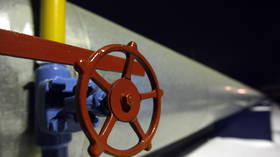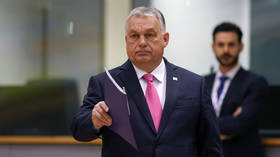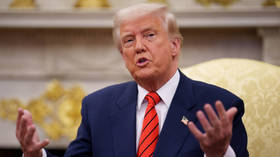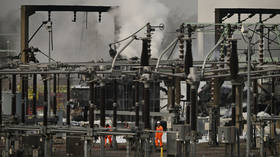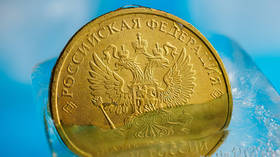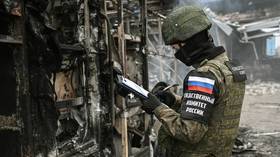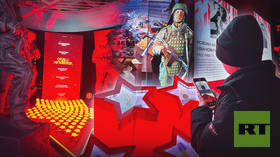From beating the Nazis to starting the Cold War
November 28 marks the 65th anniversary of the key international summit of World War II: the Tehran conference of 1943.
At it, Great Britain, the U.S. and the Soviet Union agreed to work together to beat the Nazis in a hitherto unseen level of military cooperation; the y conceived the idea of the United Nations; and, perhaps unwittingly, planted the roots of the Cold War.
It was a crucial moment in the history of diplomatic relations, one that helped shape the realities of the modern world.
Doing the job by themselves
Though the U.S. had declared war on Germany and Italy back in December 1941 (this coincided with the first successes of the Soviet army), it refrained from actively participating in the military action.
When Germany altered strategy and gained an advantage, Winston Churchill informed Stalin that the second front wouldn’t be initiated in 1942.
However, ever since June 1942 the U.S. had been sending valuable battle units as well as materials and food under the Land-Lease program. The overall value of the U.S. aid to the USSR reached $10-11 billion (America also supplied some $31 billion to Britain, $3.2 billion to France and $1.6 billion to China).
By November 1943 the war had already seen its most important battles.
The Battle of Stalingrad was already won by the Red Army, meaning that Hitler's main objective – control of Caspian oil – wouldn't be achieved. And the victory at Kursk meant that the strategic initiative was now firmly in the hands of the Soviets. Kiev had be won back, Leningrad’s siege was breached (though not yet broken).
This was the background of the first war conference among the three world superpowers, where the General Secretary of the Communist Party of the Soviet Union Joseph Stalin was present along with U.S. President Franklin D. Roosevelt and British Prime-Minister Winston Churchill.
Overcoming fear, inventing the UN
For the first time in his life, Stalin overcame his fear of airplanes – and flew to Tehran from Baku.He proposed that Roosevelt chair the conference. Churchill remarked that he felt like a small animal sitting between the American bison and the Russian bear, as Britain was slowly losing its position as a superpower.
The impromptu framework proved effective.
Apart from providing WW2 military solutions – close ties were formed. The military staff of the three giants were from then on to keep in close touch. The Tehran conference also mapped out some of the future principles of the UN.
In this sense, the conference’s codename ‘Eureka’ was justified – as it helped bring about a post-war period of relative peace and security.
The three superpowers acknowledged Iran’s economic difficulties during WW2 and promised economic assistance.
According to historian Musa Hakkani “following the visit of the three leaders, the Iranian Prime Minister said that they had stayed there without informing Iranian authorities about any negotiations and agreements reached”.
This was probably because most of the results of the Teheran conference were not the most humanitarian or pacifistic.
Designing fates
The big three united in condemning France’s prompt alliance with Germany after occupation (as french writer and diplomat Romain Gary wrote in his 1972 novel Europa «…spectacle, in which France had forgotten its role, but happily extricated, finding a genius prompter: de Gaulle…»), and decided to strip it of any ‘strategic possessions outside her own border’. Meanwhile they pledged to support Turkey, as soon as it entered the war on the side of the Allies.
Stalin gave a similar pledge to wage war with Japan once Germany was defeated. In return for this, and at Stalin’s insistence, the borders of post-war Poland were determined along the Oder and Neisse rivers and the Curzon line. It was also agreed that the Yugoslavian partisans were to receive the full support of the Allies’ forces.
The Kremlin was also hoping to attract large American credits, by promising to create a Jewish state on the Crimean Peninsula.
These plans have very little official confirmation, as they didn’t really go too far.
However, some specialists believe this was one of the topics discussed during the Teheran Conference. The say choosing Yalta as the location for the following Conference proves the point (Yalta is the biggest resort-city of Crimea).
The state was to be created on the basis of three Crimean districts with high Jewish populations.
Crimea looked like an ideal alternative to Palestine, as Britain feared that any collaboration with Israel might weaken its influence in the Arabic world.
That might have been the actual reason behind the deportation of 200,000 Crimean Tatars to Uzbekistan in 1944 (at the time they were accused of collaboration with the Nazis).
Nonetheless, when the ‘Allies’ proceeded with the creation of Israel as we know it now, Stalin abandoned the idea of using the Crimea for that. Instead he played the ‘Jewish autonomous district’ card to strengthen the Far Eastern border of the Soviet Union.
Playing double games
The second front was finally opened in June 1944 with one of the bloodiest battles in history.The Invasion of Normandy cost thousands of lives; and apart from helping to defeat Nazi Germany, the occupation provided an insurance that the Soviet Army wouldn’t advance to Western Europe.
It’s for this reason that some historians believe the Normandy landings heralded the beginning of the Cold War.
One of Russia’s top diplomats – now an expert in foreign relations with over 60 years experience – was only 17 when the Tehran conference took place. But Valentin Falin has a deep understanding of its aftermath.
He is a firm believer that Roosevelt and Churchill played a double game before and after WW2: “The Cold War broke out after the siege of Stalingrad when Roosevelt's advisors, who didn’t share his views, came to a decision that the Soviet Union might come out of the war in a very strong positions, becoming a threat to the US, they realized that such a power had better be neutralized immediately. Since 1942, one of the main tools in deactivating and suppressing the Soviet Union was Germany.”
“It was possible to finish the war in 1943. There’s a joint message from Roosevelt and Churchill to Stalin where they said it was possible and necessary to put an end to the war in 1943. But then Churchill convinced Roosevelt and made sure it would never happen. They needed their own victory. They didn’t fight for joint victory over Germany but for their own development in the post-war world,” Falin concludes.
A big mystery according to historian Anatoly Utkin is ‘the Western silence on the atomic bomb’.
“When Russians found, for example, the ‘Enigma Machine’ [a device for encryption and decryption of secret messages], they immediately gave it to the British, but Western allies were totally silent about the creation of the mightiest possible bomb in this world,” Utkin says.
Keeping secrets, inspiring movies
Due to the immense threat from the Nazis, the Teheran conference was kept secret from the rest of the world.Still at a certain point Adolph Hitler became aware of the location of the summit, and made plans to assassinate the three leaders. A German paratroop drop was made in big Iranian towns, but they were caught quicker then they were able to land.
The story served as an inspiration for Russian filmmakers Aleksandr Alov and Vladimir Naumov. Their Tehran-43 action drama, with Alain Delon in the lead role, was an international hit in the 1980s. Boasting a brilliant soundtrack by Georges Garvarentz, it predictably took the Golden Prize at the 1981 Moscow International Film Festival.
Another memorable event happened prior to the dinner meeting on November 28, 1943.
Churchill presented Stalin with a specially commissioned ceremonial Sword of Stalingrad from king George VI commemorating Soviet victory. Stalin received the sword, kissed the scabbard and handed it to marshal Voroshilov who mishandled it causing the sword to fall to the ground.
The fallen sword is probably characteristic of the event, as the Teheran conference will always be remembered as offering humanity and civilization a great opportunity for a breakthrough. As the world’s major players set up a precedent of cooperation, they had the chance to surpass the stage of Cold War without wasting time or resources, a chance that they sadly didn’t take.
Ruben Zarbabyan, RT



